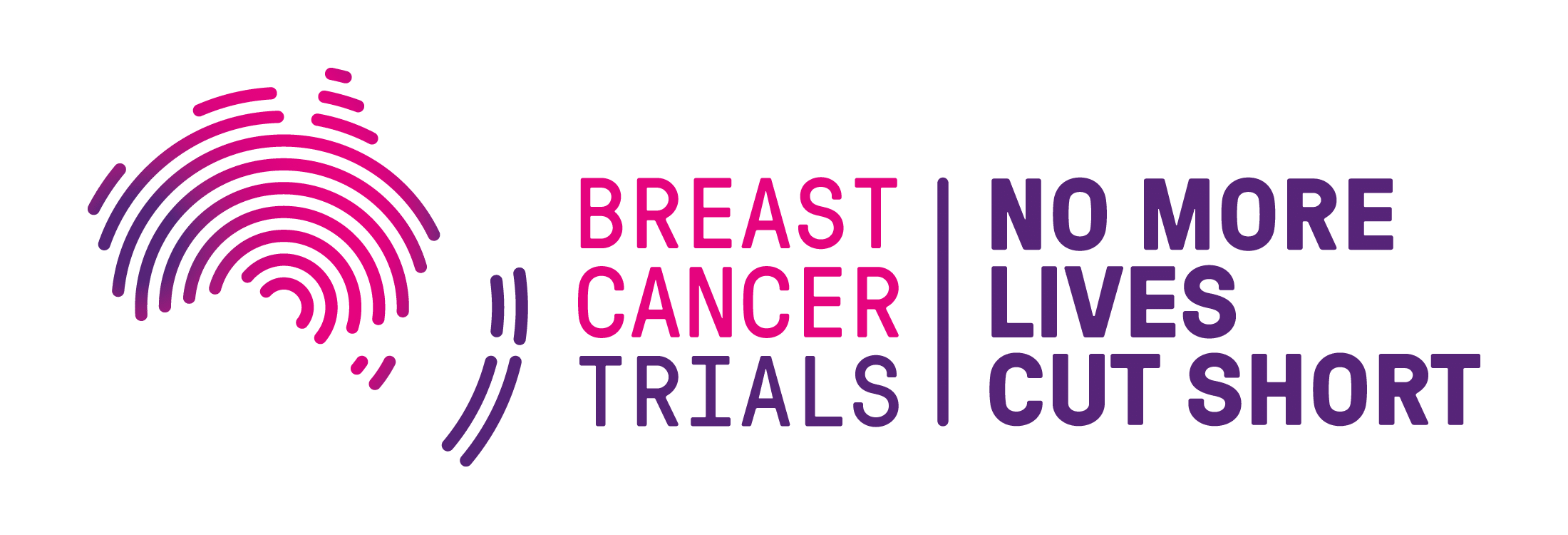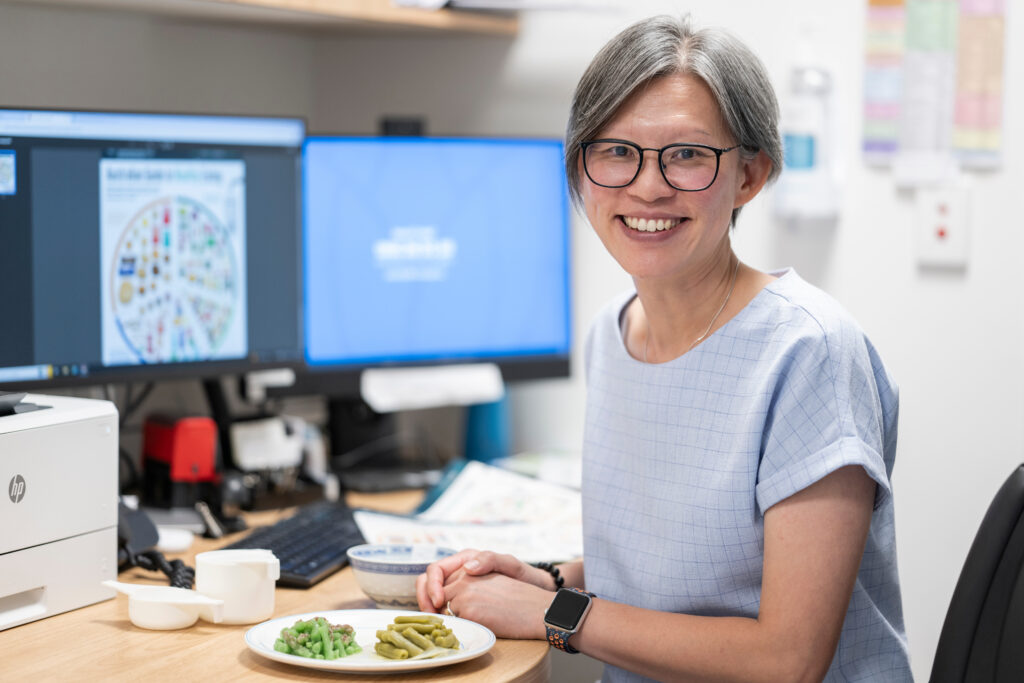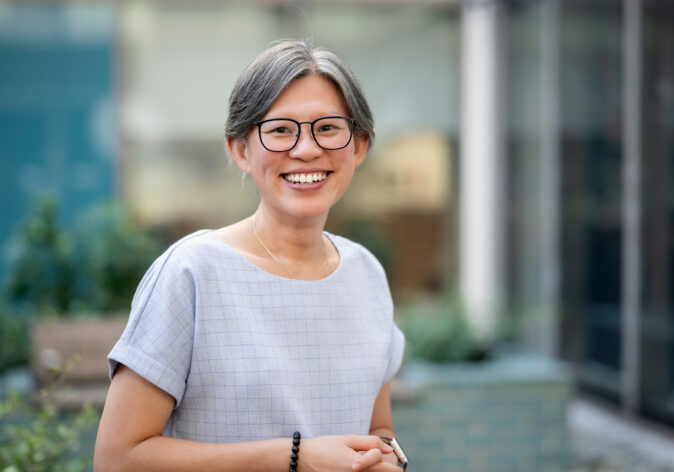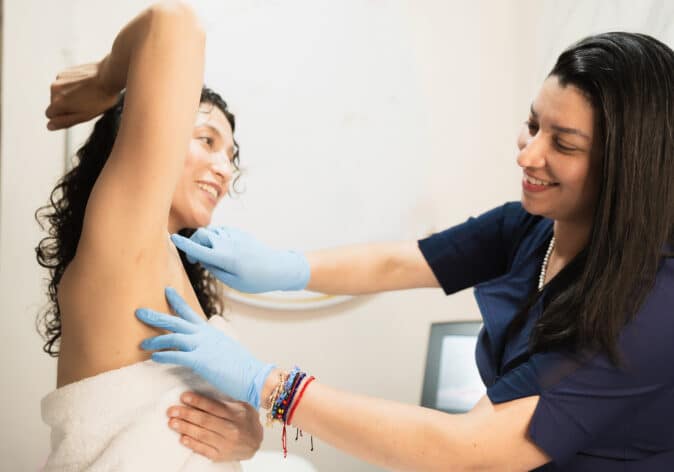Lifestyle interventions such as diet and exercise have been shown to have positive impacts on clinical outcomes, including tolerance to chemotherapy, fatigue, weight maintenance, and reduce the risk of cancer recurrence. However, there is no one intervention that fits all. Maintaining healthy lifestyle activities can be challenging for some, and reasons for non-adherence vary.
Therefore, it is important to understand the barriers and enablers of breast cancer survivors to join a lifestyle intervention. Dr Cindy Tan is a 2025 Clinical Fellow with Breast Cancer Trials, and we spoke to her about exploring breast cancer survivors’ preferences for healthy diet interventions and determining barriers for participation.
“My name is Cindy Tan; I’m a senior clinical dietician attached to the Sydney Cancer Survivorship Team. My main role is to see patients after they have completed their anti-cancer treatments and with other clinicians, like exercise physiologists, nurses, medical oncologists, and psychologists trying to provide the education or information for them to improve their quality of life, and reduce the risk of cancer recurrence as well as, manage their symptoms.”
“So that’s my main role, and my other role is a Research Fellow at University of Sydney. I think it’s important to be seeing patients and knowing that my input can benefit them is beneficial, and while some of them don’t want to talk about diet, most people appreciate the input, so I think that’s very rewarding.”
“My current role is to see patients after they have completed their anti-cancer treatments. The goal is really to provide dietary information for them to improve their diet quality if required, because some of them are doing very well, but also reduce the risk of cancer recurrence, working on those lifestyle risk factors. So, I work with a range of clinicians like exercise physiologists, psychologists, nurses and medical oncologists, where the idea is really to provide holistic input to patients.”
Listen to the Podcast
Dr Cindy Tan is a 2025 clinical fellow with Breast Cancer Trials, and her project is looking to understand the barriers and enablers of breast cancer survivors to join a lifestyle intervention.
Can you provide an overview of your research project and what inspired you to pursue this topic?
“I’m a clinical dietician, so I normally see patients at the end of their treatments. So, during this period, we know that they have often had a very tough time during the treatments and are dealing with lots of side effects. There is also obviously a disruption to their life, especially for breast cancer patients.”
“We conducted a survey and 50% of patients that we saw have made some dietary changes after the cancer diagnosis. Some of them were aligned with dietary guidelines that we provided, however some of the changes were less than ideal. And we found that people were becoming more physically inactive, for various reasons. This can be because of a changing lifestyle and obviously fatigue is one of the common side effects from the treatments.”
“We know that healthy eating by exercise and weight gain is one of the lifestyle risk factors for cancer recurrence or cancer risk. So, for that reason, we are always trying to address them at the end of their treatment, but we know that health behaviors take some time to adopt, so I guess that’s a reason in my research role where I was able to get a philanthropic grant from the University of Sydney to run a phase two feasibility study. So basically, it’s really trying to deliver healthy eating information and offer exercise sessions to a group of women during their chemotherapy and bringing those interventions forward rather than trying to address them at the end.”
“So, from these studies, we see that they have a very good uptake. We have a lot of interest from the clinicians and among those people who are eligible for this study, 97% of them say that they are interested and that they want to take part, but unfortunately during this time many participants drop out as well.”
“The dropout rate is a lot higher than what we anticipated compared to these lifestyle intervention studies. They usually do it after, when people finish treatments and things, and so the dropout rate is higher. That’s why I’m hoping that this project will allow me to explore the women who are interested in these lifestyle interventions, and sort of what time point it could be. From a clinician point of view, I think early intervention is better.”
“We know exercise helps with fatigue. We know healthy eating can have other health benefits. So, for that reason, I guess that we just want to explore the reasons people find that they can’t continue with the study, and on the opposite hand what are the reasons that make them continue with the study. So, this is where the project is about.”
How are you structuring this study? What methods are you going to use to collect the data?
So, what we are planning to do is to survey a group of women with breast cancer, or early-stage breast cancer. So, asking them a few questions through this online survey to see whether they’re interested because sometimes it’s hard if people are not interested in lifestyle interventions.”
“It doesn’t matter what we do, but we know that the research has shown that usually people are interested. I guess another key question we are wanting to answer is what makes people participate in the study? And likewise, what are the reasons that they can’t participate, for example time commitments particularly for younger patients.”
“This would mean we have to then alter our study design to suit it, but at this point we are really fathering the information through the online survey and whoever is interested, I would like to explore more in-depth information through the interview.”
“So that’s my goal, and I think Breast Cancer Trials have a very good network of consumers involved as well. So, I’m hoping that this online survey can be distributed through the relevant Breast Cancer Trials networks as well.”
What criteria are you using to select patients for the study?
“We want to make it broad. So, at this point we are really targeting towards women with early-stage breast cancer, and certainly we’re open to men’s as well, but they’re usually quite a minority group. And when we look at the enablers and barriers, obviously there’s always some sort of a difference between male and female.”
“So, because of the time and the resources at this point we’re targeting towards early-stage breast cancer, if possible. I also would like to translate that into a different language so that we can start looking at the patients from other linguistic and diverse backgrounds.”
Have you identified any early trends or themes in your research so far?
“So, when we did our lifestyle intervention studies there are exercise and diet interventions delivered to the breast cancer patients, through online virtual platforms and what we noticed is that many of them like the study. So, they’re interested, and they jump at the opportunity and say that they like the design and want to participate.”
“But when it comes to completing the baseline assessment and actually attending the sessions many of those who drop out say that they have a lot of time commitments and competing interests in a sense, not just regarding medical appointments, but also family commitments, and work commitments, because some of them are still working full time.”
“So, I think the biggest thing is recognising commitments people have outside of their medical appointments, which makes participating in the program quite difficult. In saying that though, I think some people also say that they really like the online or virtual platform, which means they can join anytime from wherever they’re comfortable.”
“Some of them use their lunchtime hours or break to join. So that virtual platform actually allows them to have that flexibility. And traditionally, we can only offer lifestyle interventions, or just a diet intervention by itself, or education face-to-face on hospital grounds. And we know that it is hard to travel to the hospital, and one of the common barriers reported by people is parking, we know it is always challenging to find a park at the hospital.”
“So, I think that allows them to have flexibility in that way. They also like the peer-support virtual platform, you can see the people and the group actually going through the treatment together. And I guess that’s one of the reasons for those who stay on because they like that more social component.”
“There’s no one lifestyle intervention fits everyone. So, I guess this is where we want to find out what the barriers are. One of the other common barriers from participants is that they feel a little bit overwhelmed, with lots of things going on.”
“The cancer diagnosis, the whole adjustment to the chemotherapy, having to stop work. So, I think that it is a big, major life event, so it’s understandable. So, we also want to know whether the time during chemotherapy is actually not a good time for people to participate, or maybe we need to adjust the study design and how we deliver the interventions so that it suits people or encourages them to participate. So that is the other common barrier that we hear from patients is the emotional overwhelm, as well as the time commitment.”
What are some of the most significant barriers in preventing breast cancer survivors from joining diet interventions?
“I’m using the recent study as an example because some of the things that people really like about it is the peer supervision component. They also like the fact that they’re being held accountable, so in the sense that they know they need to attend.”
“And within this program, one of the design elements is education around diet and exercise and encouraging people to keep up with their normal routines. As well as reminding them that healthy eating is important, and exercise is important. So, they like the weekly sessions where they see others going through the same things as them. Peer support is crucial.”
“Put it this way, everyone knows the healthy eating and diet message, its not new information, and many of our breast cancer ladies are eating quite well and were fit to begin with, but just because of the fatigue and change in lifestyle, they result in people not keeping up with what they were doing before.”
How do you think healthcare providers can help to bridge the gap between survivors and lifestyle programs?
“I certainly think that healthcare professionals, especially medical oncologists, radiation oncologists or surgeons, have a crucial role in this. As I mentioned earlier, these studies have a very good uptake, partly because we have a lot of buy-in from the clinicians, and so they encourage their patients to join the program.”
“The encouragement from the clinicians makes a huge difference in recruitment. So, because of that reason, we managed to finish our recruitment three months ahead of schedule, which is unlike other studies. So, I think that is where the role of the health professionals comes in and is important.”
“I think health professionals are in the positions where they can provide appropriate information and guide the patients to the appropriate resources to seek information because we know Dr Google has a lot of dietary information. Some of this information can be quite reliable if it comes from a reliable source, but a lot of information is not appropriate.”
“So, I guess that having clinicians be the people to direct patients to the appropriate resources to seek information will be crucial. Especially as many of them want to make changes to their lifestyle after a cancer diagnosis.”
How do you hope your research will influence future diet interventions for breast cancer survivors?
“I’m hoping that through this project we gather data that will help us to inform a phase three study, to look at what will be the best way to deliver lifestyle interventions in terms of diet and exercise. They always come hand in hand and certainly, from a clinical point of view I’m also hoping that it will inform the clinicians on how they can best support our breast cancer patients with early-stage disease, to seek information.”
“Like healthy eating and exercise, not everyone is ready to take part in the lifestyle intervention programs. That’s where we just want to know if they’re not ready, what can we do to support them? Obviously if we have a program, then we can refer them on to that.”
What are the next steps after this research is completed?
“I’m hoping that this data will help us to inform our phase three studies and the data can be used to build a clinical pathway, as well.”
“We know many breast cancer patients with early-stage cancer survive the cancer, but they have a lot of other comorbidities. So, we need to look at bone health and need to look at cardiovascular disease, and those sorts of risk factors at late-stage breast cancer.”
“So, one of the key things is about healthy eating and exercise. That’s why they’re important because these are the modifiable lifestyle risk factors and everyone kind of knows about it. That’s why they want to make changes. So, the whole idea is really to encourage people to be more active. And what we are aiming for is not just improving the health benefits in terms of health status, but also to reduce the risk of cancer recurrence.”
“On top of that we are focusing on quality of life as well. Research has shown that exercise can help with symptom management. And when people get fitter, they have the energy to do the things that they want to do. We know that healthy eating makes people feel better and certainly can help with weight management.”
“We all know that they can link to better health outcomes, and that’s why overall women do report that they feel better. So, I think that’s part of the quality of life that we really want to focus on, not just about the health outcome itself.”



